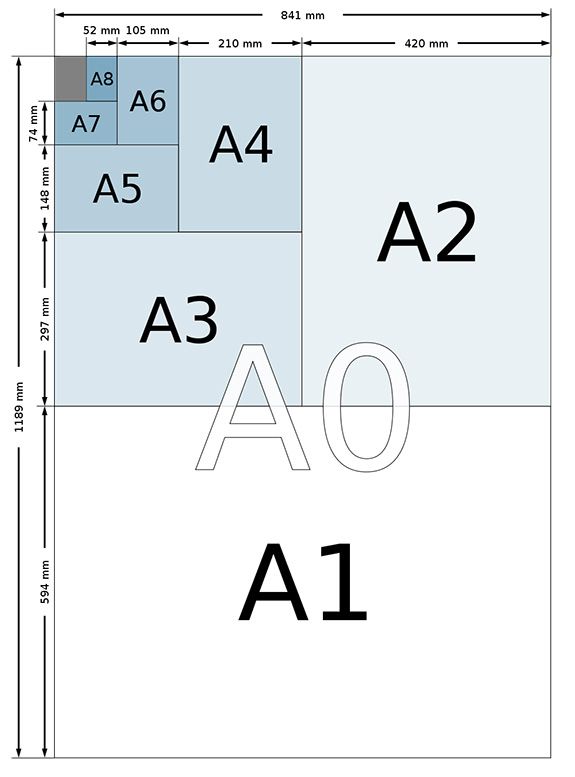Paper Sizes
Paper size throughout many parts of the world is guided by an international standard known as the ISO 216 standard. It is based on each size being half of the size of the previous one, when folded parallel to the shorter lengths. This idea was originally proposed by the German scientist Georg Christoph Lichtenberg in 1786, and most of the world has never really stopped using it. The U.S., however, is an exception. (See below.)

The Few Exceptions
A few countries have their own paper size standards. In the U.S., the two most common paper sizes, named “letter” and “legal”. They are similar to A4 and A3, but are not exactly the same.
Our “letter” sized paper (8.5” x 11”) is a bit wider and a bit shorter than A4. Our “legal” size (8.5” x 14”) paper is just a longer version of our letter paper. Ans just to confuse things, our “Tabloid” size paper (11” x 17”) is a bit narrower and longer than its A3 counterpart.
Why the differences? It’s not clear. It has nothing to do with the metric system, as some might expect. It is believed that the difference came about during the days of manual paper making and the personal preferences of the papermakers. But sadly, the full story has been lost to time.
Envelopes
The C series was established to define the sizes of envelopes that may be used in conjunction with the A and B series paper sizes. The C series is defined by the ISO 269 International Standard for paper sizes. The size of C series envelopes is directly related to A series papers.
The most common envelopes for business use are the C4, C5, C6 and DL sizes. Most people consider a DL size envelope a “letter envelope” because it fits “letter” and A4 and size paper folded into thirds. A C6 envelope is designed to fit letter/A4 paper folded into quarters. A C5 envelope is designed to fit letter/A4 paper folded in half, while a C4 envelope is designed to fit unfolded letter and A4 paper.
If you are interested, there are many other regional ISO “extensions” (German DIN standard, Swedish SIS standard, Soviet GOST standard, etc.) and nation-based standards to explore.
Return to the Tech Trends Newsletter